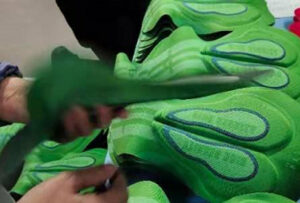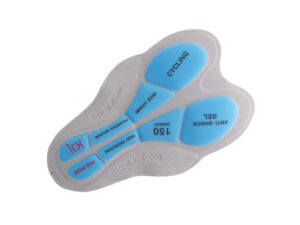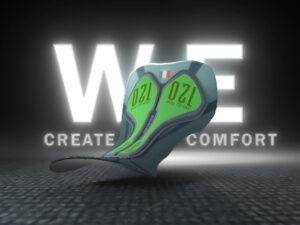Introducción al ciclismo y la salud
El ciclismo, una armoniosa sinfonía de esfuerzo físico y comunión medioambiental, se perfila como una forma de ejercicio cada vez más favorecida, que ofrece numerosos beneficios para la salud. Es una actividad de bajo impacto que mejora el estado cardiovascular, la fuerza muscular y la flexibilidad, al tiempo que ayuda a controlar el peso. La naturaleza suave del ciclismo lo hace accesible a un amplio abanico demográfico, ya que se adapta a distintos niveles de forma física y grupos de edad.
Más allá de sus atributos físicos, el ciclismo también contribuye al bienestar mental. Alivia el estrés, mejora el estado de ánimo y abre las puertas a la exploración al aire libre. Este compromiso con la naturaleza y el medio ambiente desempeña un papel crucial en la salud mental, proporcionando un respiro de la rutina diaria.
Comprender las almohadillas de ciclismo
Si nos adentramos en el equipamiento ciclista, las badanas son un componente esencial, aunque a menudo se pasa por alto. Ubicadas en el interior del culotte, estas badanas son fundamentales para amortiguar y proteger al ciclista. Las hay de varias formas, tamaños y materiales, cada una diseñada para adaptarse a diferentes estilos de ciclismo y necesidades anatómicas.
La evolución de las badanas de ciclismo refleja los avances tecnológicos y una comprensión más profunda de la comodidad del ciclista. Estas badanas se han transformado significativamente, pasando de las primitivas badanas de cuero a los modernos materiales sintéticos, mejorando la experiencia ciclista.
El papel de las badanas en la prevención de molestias
La comodidad es primordial en cualquier actividad física, especialmente en el ciclismo, donde se pasa mucho tiempo sentado. Las almohadillas para ciclismo desempeñan un papel crucial en este contexto. Mitigan las molestias causadas por la fricción y la presión continuas en la región pélvica. Esta comodidad no se limita a evitar el malestar temporal, sino que mejora el rendimiento y la resistencia generales.
Los ciclistas se enfrentan a menudo a problemas como rozaduras, dolor e irritación de la piel. Si no se tratan, estas molestias pueden convertirse en problemas más graves que disuadan de continuar con la actividad. Los acolchados para ciclismo, con su efecto amortiguador, actúan como barrera, reduciendo el impacto de estos problemas comunes.
Prevenir las lesiones con unos guantes de ciclismo adecuados
El aspecto protector de las protecciones para ciclistas va más allá de la mera comodidad. Son fundamentales para prevenir las lesiones relacionadas con el ciclismo. El movimiento repetitivo y la presión ejercida sobre las zonas pélvica y perineal pueden provocar afecciones como compresión nerviosa, infecciones cutáneas e incluso problemas vasculares a largo plazo.
El diseño de las almohadillas de ciclismo, que incorpora aspectos como el grosor, la densidad y la forma, se basa en la investigación científica. Esta investigación se centra en reducir los puntos de presión y mejorar el flujo sanguíneo, previniendo así posibles lesiones.
Anatomía y selección de la almohadilla de ciclismo
En lo que respecta a las badanas, no existe una talla única. La anatomía humana varía enormemente, y esta variación exige un enfoque personalizado para seleccionar la badana adecuada. Factores como la estructura ósea, la rotación pélvica y la sensibilidad personal son cruciales en esta selección.
Por ejemplo, unos huesos de la cintura más anchos podrían requerir una almohadilla más ancha, mientras que una postura de conducción más agresiva podría necesitar una almohadilla con una distribución de la presión diferente. Reconocer estos matices es esencial para disfrutar de una experiencia ciclista cómoda y sin lesiones.
El material importa: Cómo elegir el tejido adecuado para las badanas de ciclismo
Las almohadillas de ciclismo se fabrican con diversos materiales, cada uno de los cuales ofrece ventajas únicas. Las almohadillas tradicionales se fabricaban con cuero natural, pero las versiones modernas utilizan principalmente tejidos sintéticos. Estos materiales van desde la espuma de alta tecnología hasta las inserciones de gel, diseñadas para proporcionar una amortiguación y un control de la humedad óptimos.
La elección del material afecta a la transpirabilidad, las propiedades de evacuación de la humedad y la durabilidad. Por ejemplo, las almohadillas de gel pueden ofrecer una mayor amortiguación, pero ser menos transpirables que las de espuma. Comprender estas ventajas y desventajas es fundamental para elegir la almohadilla adecuada.
Tamaño y ajuste: Asegúrese de que su almohadilla de ciclismo se ajusta perfectamente
La eficacia de una badana depende en gran medida de su tamaño y ajuste. Una badana mal ajustada puede anular todas sus ventajas, provocando incomodidad y posibles lesiones. El ajuste debe complementar la forma del cuerpo y la postura.
Tener en cuenta la anchura del hueso de la cintura y el tipo de ciclismo, ya sea de carretera, de montaña o informal, le ayudará a elegir la talla adecuada. Además, puede ser necesario probar diferentes estilos y marcas para encontrar el modelo perfecto.
Mantenimiento y cuidado de las almohadillas de ciclismo
Mantener la integridad y la higiene de las almohadillas de ciclismo es esencial para su longevidad y eficacia. La limpieza regular, siguiendo las instrucciones de cuidado del fabricante, es vital. Este mantenimiento no sólo preserva el material de la badana, sino que también evita la acumulación de bacterias, que pueden provocar infecciones cutáneas.
El ciclo de vida de una almohadilla de ciclismo depende de su cuidado y de la frecuencia de uso. La inspección periódica de los signos de desgaste garantiza que la badana siga siendo funcional y segura.
Conclusión: Cómo integrar el cojín de ciclismo adecuado en tu rutina
En conclusión, la badana adecuada no es sólo un accesorio, sino una necesidad para cualquier ciclista. Garantiza comodidad, previene lesiones y mejora la experiencia ciclista en general. Este artículo subraya la importancia de tener en cuenta las necesidades anatómicas individuales, el material, el tamaño y el ajuste adecuados, y el mantenimiento de las protecciones para ciclismo.
Como ciclistas, es fundamental dar prioridad a la salud y la comodidad seleccionando la badana adecuada. De este modo se mejora el rendimiento y se garantiza un viaje en bicicleta sostenible y agradable.




